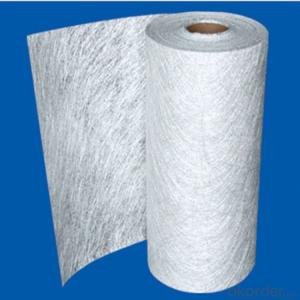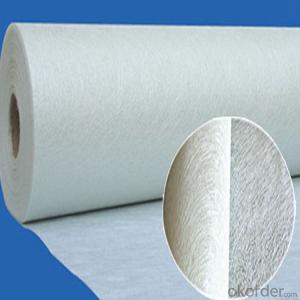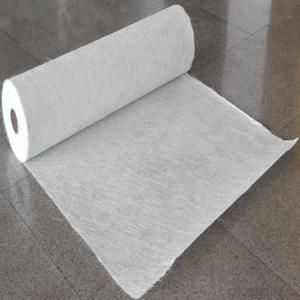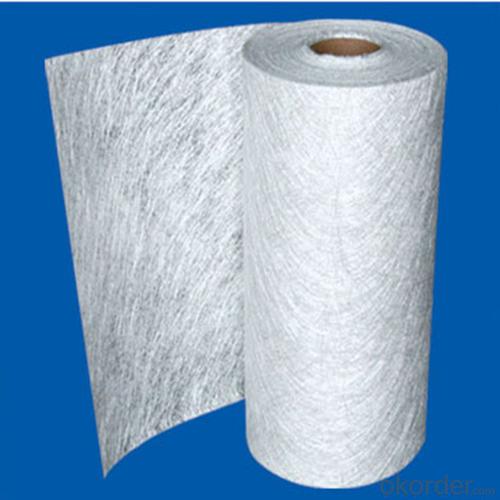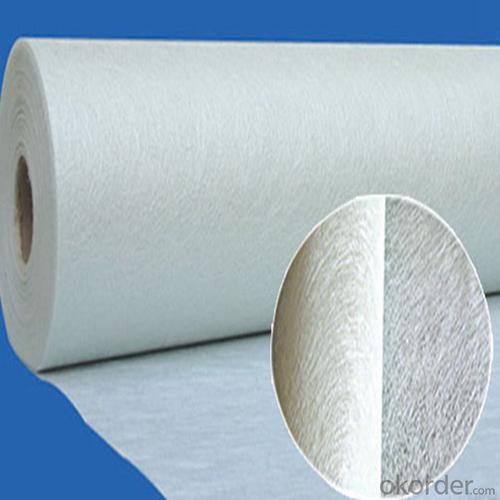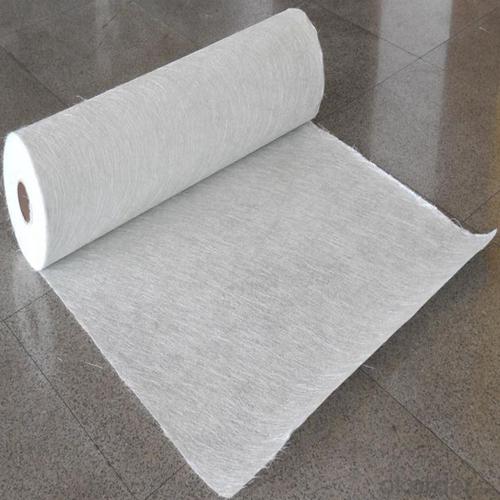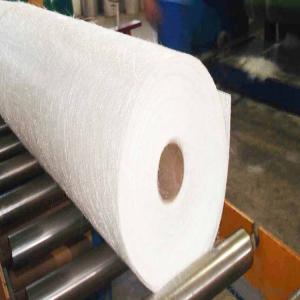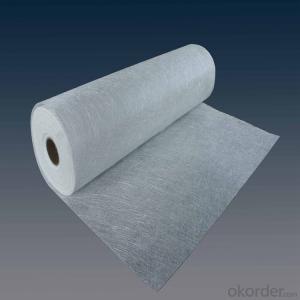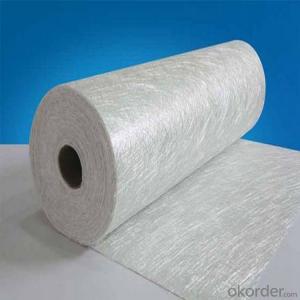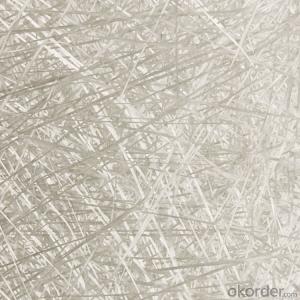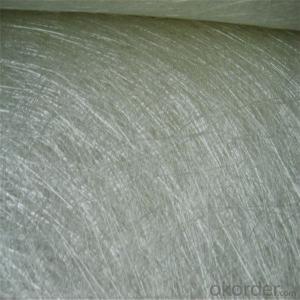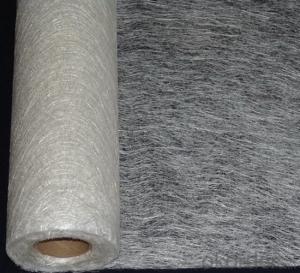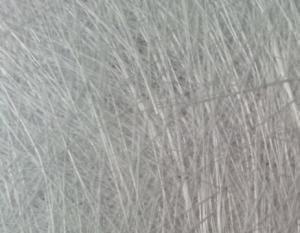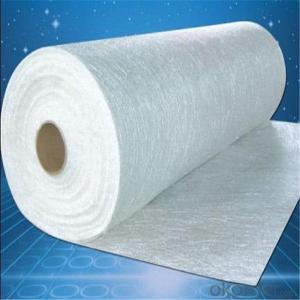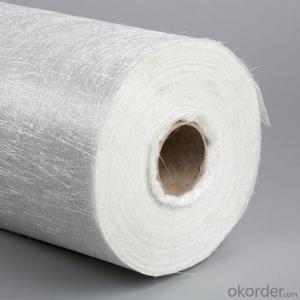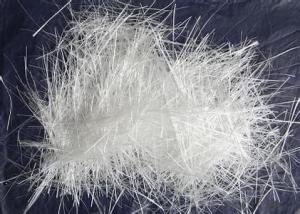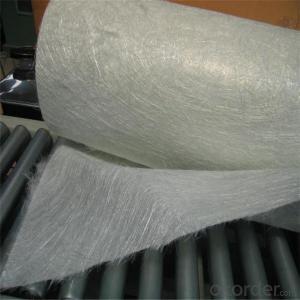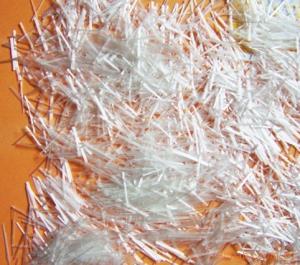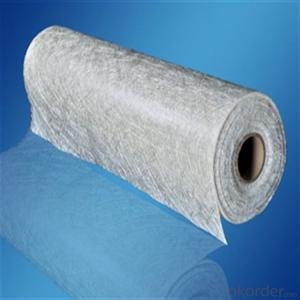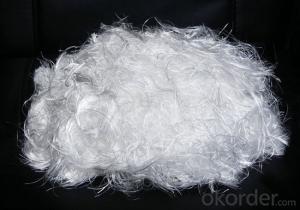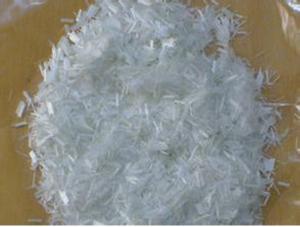Fiberglass Chopped Strand Mat 3 4 Oz X 50 - 450g/m2 Fiberglass Powder Chopped Strand Mat
- Loading Port:
- China main port
- Payment Terms:
- TT OR LC
- Min Order Qty:
- 1 kg
- Supply Capability:
- 5000 kg/month
OKorder Service Pledge
OKorder Financial Service
You Might Also Like
Product Description:
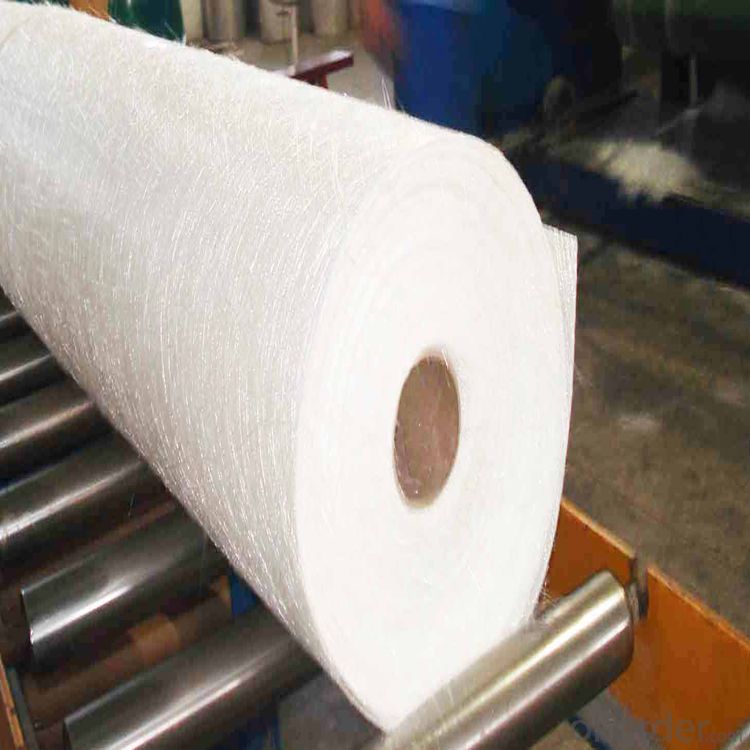
Surfacing Tissue mainly used in the surface layers of FRP products. It features even Fiber distribution, soft feel, level and smooth fiber surface, less glue content, quick resin soak and good pattern fitness. It can improve the product surface property on corrosion resistance, compressive strength, seepage resistance, and longer service life. It is also suitable for spraying; pattern pressing and other FRP pattern technology.
Surfacing Tissue mainly used in the surface layers of FRP products. It features even Fiber distribution, soft feel, level and smooth fiber surface, less glue content, quick resin soak and good pattern fitness. It can improve the product surface property on corrosion resistance, compressive strength, seepage resistance, and longer service life. It is also suitable for spraying; pattern pressing and other FRP pattern technology.
Product Features:
Fast breakdown in styrene
Fiber dispersed evenly
Low binder content
Superior acid corrosion resistance
Specifications:
Item | Over Density | Moisture Content | Chop Density | Polyester Yarn | Width |
(g/m2) | (%) | (g/m2) | (g/m2) | (mm) | |
EMK300 | 309.5 | ≤0.15 | 300 | 9.5 | 50-3300 |
EMK380 | 399 | 380 | 19 | ||
EMK450 | 459.5 | 450 | 9.5 | ||
EMK450 | 469 | 450 | 19 | ||
EMC0020 | 620.9 | 601.9 | 19 | ||
EMC0030 | 909.5 | 900 | 9.5 |
Product Packaging:
Each Surface Tissue is wound onto a paper tube which has an inside diameter of 76mm and the mat roll has a diameter of 330mm. The mat roll is wrapped up with plastic film,and then packed in a cardboard box or wrapped up with kraft paper. The rolls can be vertically or horizontally placed. For transportation, the rolls can be loaded into a cantainer directly or on pallets.
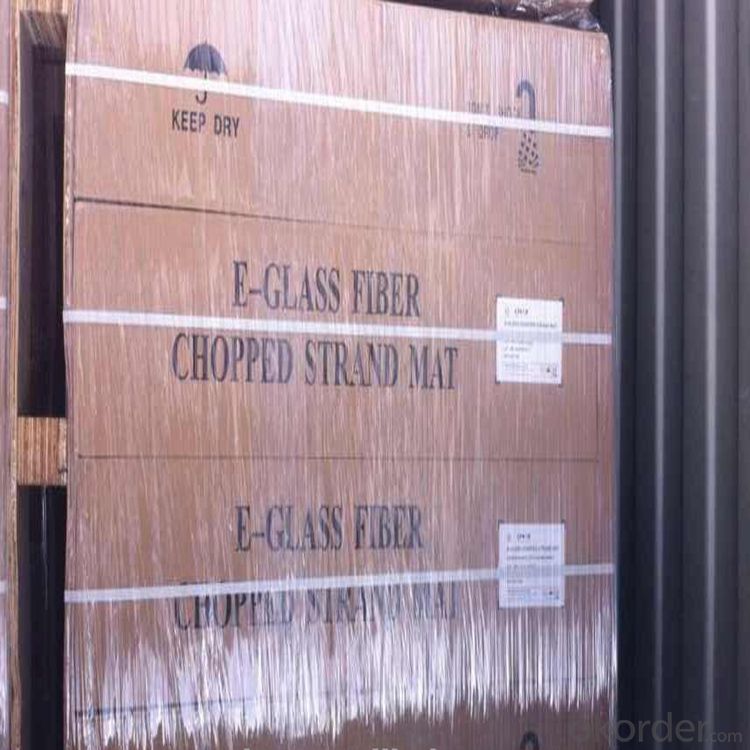
Product Storage:
Unless otherwise specified, Chopped Strand Mat should be stored in a dry, cool and rain-proof area. It is recommended that the room temperature and humidity should be always maintained at 15℃~35℃ and 50%~75% respectively.
Company Information
CNBM (China National Building Material) Group is the largest comprehensive building materials group in China that in integrate scientific research, manufacturing and logistics into one entity. The largest building materials and equipment specialists in China. Upon State Council approval, today CNBM owned more than 300 subordinate manufacturing factories and servicing companies. There are 6 fully owned public listed companies and 11 partially owned with substantial shares public listed companies. In many of these fields, CNBM is playing the leading role in the building industry in the country.
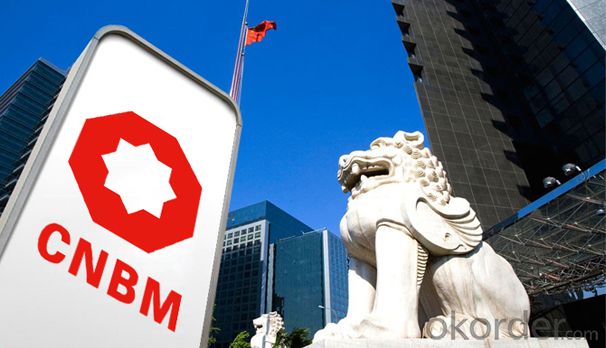
- Q: What are the different surface finishes available for fiberglass chopped strand?
- Fiberglass chopped strand offers a range of surface finishes to choose from. One commonly used option is a polyester resin, which gives the fiberglass a smooth and glossy appearance. This type of finish is ideal for applications where aesthetics play a crucial role, like in boat or automotive part manufacturing. Another choice is a gelcoat surface finish, a high-performance resin that provides a sturdy and protective layer to the fiberglass. This finish is suitable for applications exposed to harsh environmental conditions, such as swimming pool or water tank construction. Furthermore, there are surface finishes available with additives like pigments or fillers, offering specific properties to the fiberglass. For instance, an anti-slip surface finish can be applied for applications requiring good traction, like stairs or ramps. Ultimately, the selection of a surface finish for fiberglass chopped strand depends on the specific needs of the application, considering factors such as aesthetics, durability, and functionality.
- Q: How is fiberglass chopped strand used in the consumer goods industry?
- Due to its versatile properties and numerous applications, fiberglass chopped strand is widely utilized in the consumer goods industry. Its primary use is in enhancing the strength, durability, and overall performance of various consumer goods. One way fiberglass chopped strand is commonly employed in the consumer goods industry is in the production of plastic products. By incorporating chopped strands into the plastic matrix, the final product's strength and rigidity are significantly improved. This is especially beneficial for items like automotive parts, electrical enclosures, and furniture components that need to withstand heavy loads or external impacts. Moreover, fiberglass chopped strand is utilized in the manufacturing of appliances such as refrigerators, washing machines, and ovens. These appliances often require heat resistance and insulation properties, which can be achieved by including chopped strands in their construction. The fiberglass reinforcement provides enhanced thermal stability, enabling the appliances to endure high temperatures without deformation or structural damage. Another important application of fiberglass chopped strand in the consumer goods industry is in the production of sporting goods and recreational equipment. It is commonly used in items like surfboards, kayaks, helmets, and bicycles, where the strength-to-weight ratio is crucial. The addition of chopped strands to the composite materials used in these products enhances their strength and resilience, making them more durable and reliable during intense physical activities. Furthermore, fiberglass chopped strand is extensively used in the production of various household items, including bathtubs, shower enclosures, sinks, and countertops. These products require resistance to moisture, chemicals, and impact, which can be achieved by incorporating chopped strands into their composite materials. The fiberglass reinforcement ensures that these consumer goods maintain their structural integrity and aesthetic appeal over time. In conclusion, fiberglass chopped strand is an essential component in the consumer goods industry, providing enhanced strength, durability, and performance to a wide range of products. Its applications are diverse, ranging from plastic products, appliances, and sporting goods to household items. With its unique properties, fiberglass chopped strand plays a vital role in the manufacturing process, ensuring that consumer goods meet the demands of modern consumers for high-quality and long-lasting products.
- Q: How is fiberglass chopped strand incorporated into a composite material?
- Fiberglass chopped strand is incorporated into a composite material by mixing it with a resin matrix, typically epoxy or polyester, and then forming it into the desired shape or applying it as a layer onto a mold or substrate. The chopped strands, which are small lengths of fiberglass fibers, add strength, stiffness, and reinforcement to the composite, improving its overall performance and durability.
- Q: Can fiberglass chopped strand be used in filtration applications?
- Yes, fiberglass chopped strand can be used in filtration applications. It is commonly used as a filtration media due to its high strength, chemical resistance, and ability to capture and retain solid particles in various filtration processes.
- Q: How does the fiber length distribution of fiberglass chopped strand affect the properties of composites?
- The fiber length distribution of fiberglass chopped strand plays a significant role in determining the properties of composites. Fiberglass chopped strand is typically used as a reinforcement material in composites, where it is mixed with a matrix material such as resin to form a composite structure. The fiber length distribution refers to the range of fiber lengths present in the chopped strand, which can vary depending on the manufacturing process. The properties of composites are influenced by the fiber length distribution in several ways. First and foremost, the aspect ratio of the fibers, which is the ratio of fiber length to diameter, affects the mechanical properties of the composite. Fibers with a higher aspect ratio, i.e., longer fibers, tend to provide better reinforcement and enhance the strength and stiffness of the composite. This is because longer fibers have a larger surface area and can transfer stress more effectively, leading to improved load-bearing capacity. Additionally, the fiber length distribution affects the interfacial bonding between the fibers and the matrix material. Longer fibers have a higher probability of forming strong interfacial bonds with the matrix, resulting in better load transfer and improved overall performance of the composite. On the other hand, shorter fibers may not have sufficient length to establish strong bonds, leading to reduced mechanical properties. Furthermore, the fiber length distribution can impact the processing and manufacturing of composites. Longer fibers may be more difficult to process uniformly, leading to challenges in achieving a homogeneous dispersion within the matrix. This can result in an uneven distribution of fibers, leading to potential weak spots or variations in the mechanical properties of the composite. In summary, the fiber length distribution of fiberglass chopped strand has a significant impact on the properties of composites. It influences the reinforcement capability, interfacial bonding, and processing characteristics of the composite. Manufacturers and designers need to carefully consider the desired mechanical properties and processing requirements when selecting the appropriate fiber length distribution for their composite applications.
- Q: How does the fiber orientation of fiberglass chopped strand affect its performance?
- The fiber orientation of fiberglass chopped strand significantly impacts its performance. The orientation refers to the alignment of the individual fibers within the strand. Depending on the intended use and desired properties, the fiber orientation can be optimized to enhance specific characteristics. Firstly, the fiber orientation affects the mechanical strength of the fiberglass. When the fibers are aligned parallel to the applied load, they can efficiently transfer the stress, resulting in increased tensile and flexural strength. This makes the material more resistant to breakage and deformation, ideal for applications requiring high structural integrity. Secondly, the fiber orientation influences the stiffness and rigidity of the fiberglass. Fibers aligned in the direction of the load offer greater resistance to bending, making the material stiffer and able to withstand higher forces without excessive deflection. This is crucial in applications where dimensional stability and resistance to deformation are important, such as in construction or automotive industries. Moreover, the fiber orientation impacts the impact resistance of fiberglass. By aligning the fibers in multiple directions, the material can distribute the applied force more evenly, dissipating the energy and reducing the likelihood of cracking or fracturing. This makes it more suitable for applications requiring impact resistance, like protective gear or transportation components. Additionally, the fiber orientation affects the thermal and electrical conductivity of fiberglass. Depending on the desired property, fibers can be aligned to enhance or minimize heat or electrical transfer. For instance, aligning fibers perpendicular to the heat flow can improve insulation properties, while aligning them parallel to electrical current flow can enhance conductivity. In summary, the fiber orientation of fiberglass chopped strand plays a crucial role in determining its performance characteristics. By optimizing the alignment, the material's strength, stiffness, impact resistance, and thermal/electrical conductivity can be tailored to meet the specific requirements of various applications.
- Q: What are the typical colors available for fiberglass chopped strand?
- The manufacturer and intended use of fiberglass chopped strand determine the range of available colors. White, black, and grey are the most frequently used colors for this type of fiberglass, particularly for applications where appearance is not a top priority. Some manufacturers may also provide custom color choices for particular projects or uses. To ascertain the precise color choices for a specific fiberglass chopped strand product, it is crucial to consult with the manufacturer or supplier.
- Q: Can fiberglass chopped strand be used in the production of automotive body parts?
- Yes, fiberglass chopped strand can be used in the production of automotive body parts. Fiberglass chopped strand is a type of reinforcement material that consists of small strands of glass fibers. These fibers are randomly chopped into shorter lengths and then mixed with a resin or other binding material to form a composite. This composite can be molded into various shapes to create automotive body parts such as hoods, fenders, and bumpers. Fiberglass chopped strand offers several advantages for automotive applications. Firstly, it has high strength-to-weight ratio, which means it provides excellent strength and rigidity while being lightweight. This is particularly important for automotive body parts as it helps to reduce the overall weight of the vehicle, resulting in improved fuel efficiency and performance. Additionally, fiberglass chopped strand is known for its impact resistance and durability. It can withstand heavy loads, shocks, and vibrations, making it suitable for withstanding the harsh conditions that automotive body parts often encounter. It also has good corrosion resistance, which is important for automotive applications where the parts may be exposed to moisture, chemicals, and other corrosive elements. Furthermore, fiberglass chopped strand can be easily molded into complex shapes, allowing for greater design flexibility in the production of automotive body parts. It can also be easily repaired if any damages occur. Overall, fiberglass chopped strand is a versatile and reliable material that can be effectively used in the production of automotive body parts. Its strength, durability, lightweight properties, and design flexibility make it a popular choice in the automotive industry.
- Q: Can fiberglass chopped strand be used in the production of electrical components?
- Yes, fiberglass chopped strand can be used in the production of electrical components. It is a commonly used reinforcement material in electrical applications due to its excellent electrical insulation properties. The chopped strands provide reinforcement and help improve the mechanical strength and dimensional stability of the components.
- Q: What is electroplate glass fiber cloth
- Leather, silicone, plating, red twill, the largest area can produce 1000mm * 500mm carbon fiber board (color carbon fiber board)
Send your message to us
Fiberglass Chopped Strand Mat 3 4 Oz X 50 - 450g/m2 Fiberglass Powder Chopped Strand Mat
- Loading Port:
- China main port
- Payment Terms:
- TT OR LC
- Min Order Qty:
- 1 kg
- Supply Capability:
- 5000 kg/month
OKorder Service Pledge
OKorder Financial Service
Similar products
Hot products
Hot Searches
Related keywords
